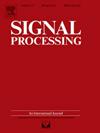Exploring synergies: Advancing neuroscience with machine learning
IF 3.4
2区 工程技术
Q2 ENGINEERING, ELECTRICAL & ELECTRONIC
引用次数: 0
Abstract
Machine learning (ML) has transformed neuroscience research by providing powerful tools to analyze neural data, uncover brain connectivity, and guide therapeutic interventions. This paper presents core mathematical frameworks in ML that address critical challenges in neuroscience. We introduce state-space models for closed-loop neurostimulation and discrete representation learning methods that improve the interpretability of time-series analysis by extracting meaningful patterns from complex neural recordings. We also describe approaches for revealing inter-regional brain connectivity through high-dimensional time series analysis using Gaussian processes. In the context of multi-subject neuroimaging, we explore independent vector analysis to identify shared patterns that preserve individual differences. Finally, we examine distributed beamforming techniques to localize seizure sources from EEG data, an essential component of surgical planning for epilepsy treatment. These methodological innovations illustrate the growing role of ML in neuroscience via interpretable, adaptive, and personalized tools that analyze brain activity and support data-driven interventions.
探索协同效应:用机器学习推进神经科学
机器学习(ML)通过提供分析神经数据、揭示大脑连接和指导治疗干预的强大工具,改变了神经科学研究。本文介绍了ML中解决神经科学关键挑战的核心数学框架。我们引入了闭环神经刺激的状态空间模型和离散表示学习方法,通过从复杂的神经记录中提取有意义的模式来提高时间序列分析的可解释性。我们还描述了通过使用高斯过程的高维时间序列分析来揭示区域间大脑连接的方法。在多学科神经成像的背景下,我们探索独立的矢量分析,以确定保留个体差异的共享模式。最后,我们研究了分布式波束形成技术,以从脑电图数据中定位癫痫发作源,这是癫痫治疗手术计划的重要组成部分。这些方法学上的创新说明了机器学习在神经科学中越来越重要的作用,通过可解释的、自适应的和个性化的工具来分析大脑活动,并支持数据驱动的干预。
本文章由计算机程序翻译,如有差异,请以英文原文为准。
求助全文
约1分钟内获得全文
求助全文
来源期刊

Signal Processing
工程技术-工程:电子与电气
CiteScore
9.20
自引率
9.10%
发文量
309
审稿时长
41 days
期刊介绍:
Signal Processing incorporates all aspects of the theory and practice of signal processing. It features original research work, tutorial and review articles, and accounts of practical developments. It is intended for a rapid dissemination of knowledge and experience to engineers and scientists working in the research, development or practical application of signal processing.
Subject areas covered by the journal include: Signal Theory; Stochastic Processes; Detection and Estimation; Spectral Analysis; Filtering; Signal Processing Systems; Software Developments; Image Processing; Pattern Recognition; Optical Signal Processing; Digital Signal Processing; Multi-dimensional Signal Processing; Communication Signal Processing; Biomedical Signal Processing; Geophysical and Astrophysical Signal Processing; Earth Resources Signal Processing; Acoustic and Vibration Signal Processing; Data Processing; Remote Sensing; Signal Processing Technology; Radar Signal Processing; Sonar Signal Processing; Industrial Applications; New Applications.
 求助内容:
求助内容: 应助结果提醒方式:
应助结果提醒方式:


